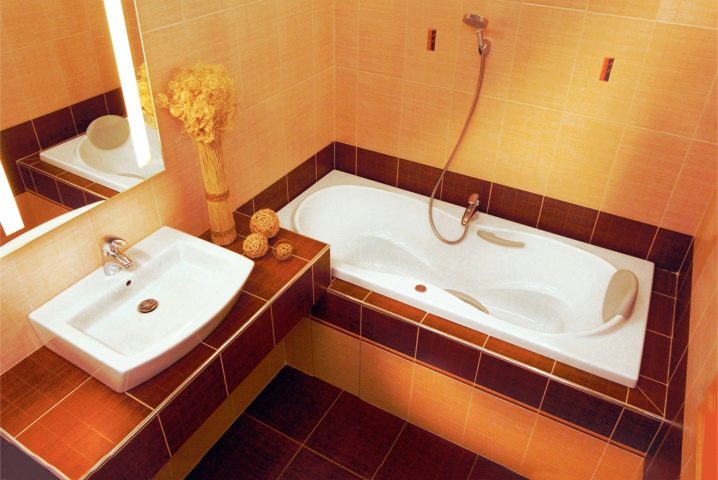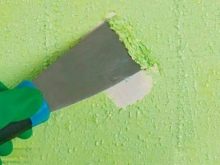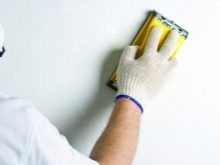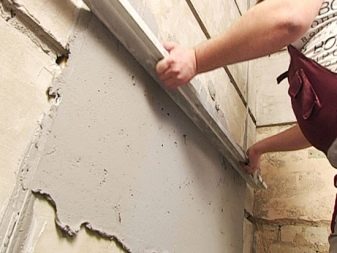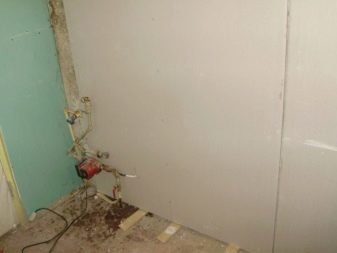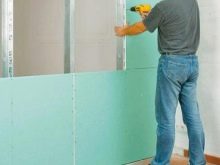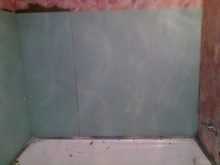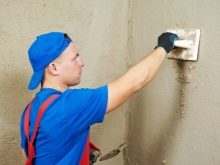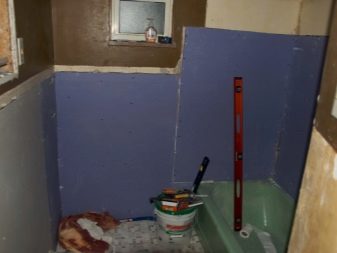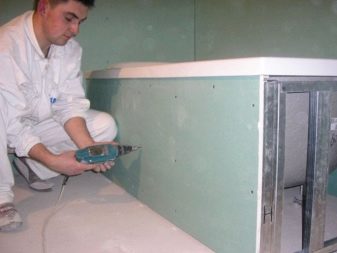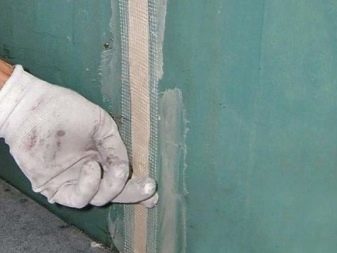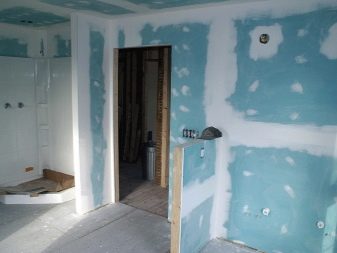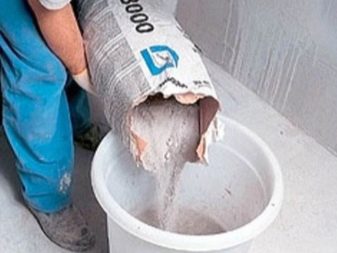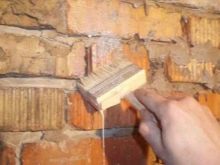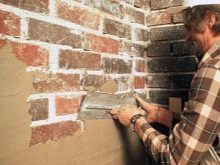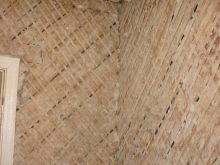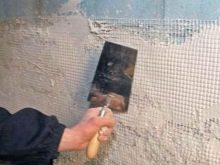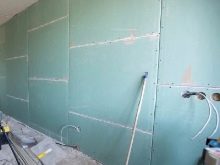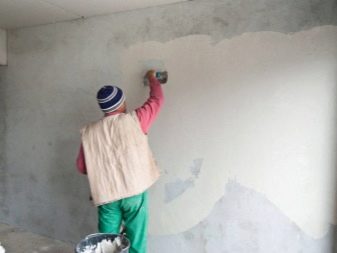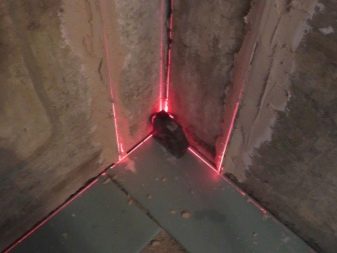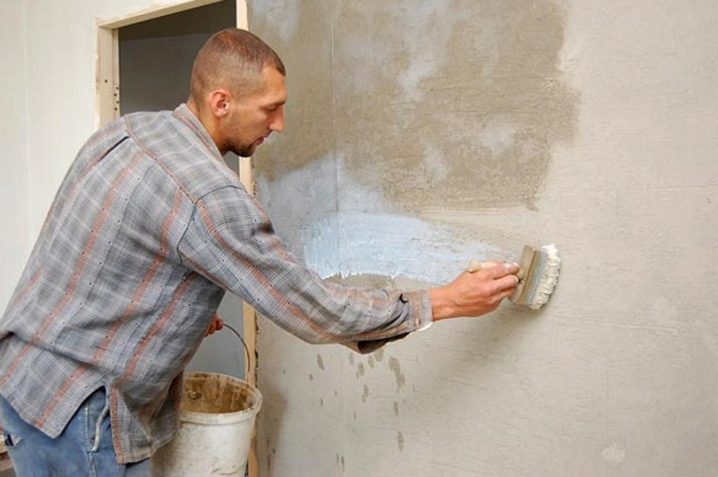Preparation of the walls under the tile: solutions for the bathroom
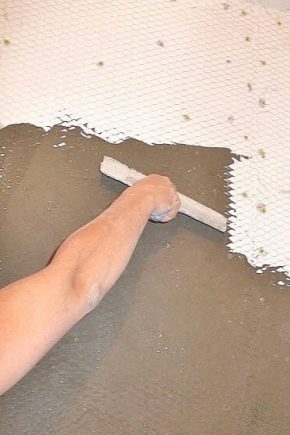
If you decide to pokleit tile in the bathroom, you need to start not with the purchase of the latter, but with the preliminary preparation of the walls. A tile glued to the untreated surface of the walls or floor will not last long. Over time, it will begin to fall off or become covered in small web-like cracks. Today, for one reason or another, many people prefer to do repairs in an apartment on their own, especially since construction stores are full of various materials, and video tutorials on the Internet will help solve any problem.Starting repairs, without resorting to the help of specialists, do not forget that repairs in the bathroom require a special approach, since it is here that moisture and dampness "live" nowhere.
Special features
Modern tile adhesive allows you to stick it on almost any surface, even paint. But the peculiarity is that high-quality repair does not depend on the glue and tile, but on the preliminary preparation of the walls. They should be brought closer to a perfectly smooth state, without any “shaky” sections. Only after that you can read tile laying.
Thus, despite the fact that cement-based glue or a special mortar can level even small differences not exceeding 5 centimeters, it is recommended to still take a spatula or sandpaper and clean the surface from dust, dirt, “hanging” plaster or paint. In addition, so that your work is not in vain, do not forget to gloss over insignificant, at first glance, defects (cracks and so on).
When a substantially uneven wall alignment must be planned either using plaster, requiring a large consumption of material, or have to do plasterboard plasterboard (gypsum plasterboard), which sometimes significantly reduces the space of the room.It all depends on which way you decided to use the trim: sheets of plasterboard can be glued, and you can erect a frame structure.
Advantages and disadvantages
So, there is an alternative - drywall or plaster. If we talk about saving the budget and the simplicity of the process, then the most inexpensive and fastest way, which does not require much skill, can be safely called leveling with drywall. However, it is necessary to consider that covering the room with sheets of gypsum boards can significantly reduce the space. In addition, here you will need to reckon with heat and waterproofing.
If the area of the bathroom is small, or there are minor irregularities, it is better to stop on the alignment with plaster. Work with plaster, unlike drywall, can cost a little more (it all depends on its consumption). For beginners, it will not be easy at first, as certain skill is needed here. In addition, the plastered wall needs time to dry, which, depending on the applied layer, sometimes lasts up to 7 days. It is not uncommon when, in order to save money, a combination of the use of drywall and plaster is appropriate.
Materials
After evaluating the condition of your walls, and correctly determining the leveling method that suits you best, you can go to the hardware stores and familiarize yourself with the existing materials.
Drywall
Gypsum or sheets of gypsum boards are presented in hardware stores of various color variations. They are great for quick and perfect alignment. Although the bathroom should buy endowed with a high level of moisture resistance of green sheets. They are quite durable, so they are able to withstand even decorative tiles. When installing easy to use and cutting, which contributes to the rapid use and economical consumption of material. Before installing them, given that we are talking about a bathroom, it would be better to prime the wall with an antifungal primer, despite the fact that they have already been treated with a special antiseptic.
On perfectly flat walls or walls with minor cracks and roughness, drywall can be glued. In this case, it is recommended to remove any bumps in advance and seal up the existing holes. It is very important to dilute the glue properly, strictly according to the instructions.The fact is that, over time, the sheets that are poorly glued, weighted with tiles, and also the gypsum boards glued to the wrongly diluted glue, will start to lag behind the wall because of the dampness.
If space allows room, it is better to strengthen the drywall with screws both horizontally and vertically on a frame made of specially galvanized metal. Erection of the frame - the procedure is simple, you need to stock up on the level, drill and beacons, which can be made of ordinary thread.
Whichever method of fixing drywall you choose, it is important to seal the joints of the sheets. For this purpose, a special mesh is sold (there is also a self-adhesive one), which needs to be glued to the resulting seam, after which a small layer of putty is applied to it.
Sometimes instead of drywall with concrete walls, PVC panels are used.which are also easy to install and also slightly cheaper. But here it is necessary to remember that this material is flammable and is able to accumulate moisture, after which it emits an unpleasant chemical smell.
Plaster: which one is better?
Some builders, wanting to save money, independently prepare a plaster mixture, combining cement with sand or clay.For starters, it is better to buy ready-made mixes, the range of which in stores is quite wide (from clay to gypsum). When self-manufacturing, for example, cement-sand mortar, you can make a mistake in the required ratio, which will affect the quality of repair and greatly complicate it. The greatest demand of buyers are modern powders based on cement and gypsum. Plaster mix is diluted strictly according to the instructions. Too liquid solution will be poorly fixed, flowing down, and excessively thick is taken lumps, which are quite difficult to smudge.
In addition, remember that you should not dilute too much powder immediately, as the diluted mixture hardens for about 30 minutes, this is the time during which you must quickly apply the plaster mixture, when you can still correct the application.
Plaster on the basis of cement, unlike plaster, is suitable both for internal, and for external works. Cement mortar has high strength and moisture resistance, which is suitable for use in the bathroom. However, it is rather heavy, therefore it is not recommended to apply a large layer.There are cases when the tile fell off with a thick layer of cement applied. In order to avoid such cases, it is recommended to plaster the wall not by applying a thick layer of cement plaster, but to pre-level it, removing the bulges. Then a relatively flat wall is adjusted to the desired state with a moderate layer of cement plaster.
Do not buy plaster on the basis of plaster for finishing the bathroom, as it can be damp, absorbing excessive moisture over time. The use of such a solution is permissible if the plaster is treated with a waterproofing primer before laying the tile. When buying plaster, you can be guided by the manufacturer (domestic or imported), but be sure to look at the compliance with the material from which your wall is made, which will provide a quality repair. Before starting work, the wall can be treated with a special primer with the addition of any means of mold.
According to the builders, copper sulfate powder effectively protects against the appearance of any fungus. In addition, it is sold at an attractively inexpensive price compared to other modern means.
If you still need to apply a thick layer, it is recommended to use cement-lime mortarwhich involves the installation of plaster mesh of steel. Such an alignment completely dries out after about a month, laying tiles is allowed not earlier than 7 days after lining. During the purchase of the mixture, it is necessary to look at the surface finish composition declared by the manufacturer: thin or thick. If the mixture is chosen correctly, the installation of a grid for applying a thick layer may not be necessary.
Special plaster for applying a thick layer has a high viscosity index.
The subtleties of working with different surfaces
There is one more important nuance that affects the good and high-quality preparation of walls for laying tiles. We are talking about the material from which the walls, partitions, and the house as a whole (brick, wood, concrete, and so on) are made.
Brick
Old brick houses, for example, consist of only one supporting partition, while the rest are made of gypsum plasterboard. Such constructions are most often plastered with cement mortar on a metal mesh, which may cause noticeable height inconsistencies,reaching up to 10 cm. The treatment of the wall in such conditions consists in the complete or partial removal of poorly adhered plaster.
After that, in order to avoid irregularities, the wall must be well cleaned and treated with the same solution. To ensure that the corners do not lose their shape, it is advisable to purchase metal corners on top of which plaster is applied. Before finishing the wall, it is desirable to treat it with a coating material (a kind of insulation) that protects the brick from moisture.
Tree
The old plaster is easily removed from the brick partition, but it is difficult to clean the wood. In such cases, in order to achieve a flat surface of the wall, it is easier to use a special moisture-proof green plasterboard (see above). Removing from the surface all that could be removed, it is recommended to plaster it with almost any solution (lime, clay, cement). Wood in this case is an unpretentious material, but still an earthen mortar would be an ideal option, since it does not require large expenditures. To prevent the plaster from slipping, it is necessary to attach a metal grid or so-called shingles to a wooden surface.After the tree is hidden by you behind a small layer of clay plaster, you can begin to plaster the room with plasterboard, which will give it a perfectly smooth look.
Concrete
In prefabricated houses, the demolition of walls for the purpose of erecting new ones is not carried out because of the structural features of the house (the house is built from strong reinforced concrete floors), so the walls here will most likely be relatively even. If it is still necessary to level the walls, then the use of cement or plaster mixes will be appropriate. It all depends on your needs and the curvature of the walls. It is easier to work with a gypsum-based solution, since it is not necessary to constantly wet the surface. Gypsum, unlike cement, gives a brighter and smoother surface. Cement makes it rough and dark. Since we are talking about laying tiles, the color of the treated surface as well as the roughness does not matter. In such cases, cement-based mortar will be more moisture resistant than gypsum mortar.
With very minor irregularities, not exceeding 5 millimeters, it is easier to fix the walls with ordinary building putty.
Monolith
If you are engaged in leveling in a monolithic house, then get ready for plastering. The fact is that such houses are made of different materials (foam concrete and concrete, tongue-and-groove blocks), therefore, only with the help of plaster, you can quickly, inexpensively and efficiently fix some of the roughness of a diverse surface. Most likely, one cannot do without a laser level and beacons here, because such houses shrink, which is reflected in differences in the wall. In such cases, the leveling method will depend on the curvature of the walls. If the drops are minor, then a gypsum mortar is quite suitable. If a thick layer of plaster is required, it is better to give preference to cement-based mixtures.
It is up to you which leveling method to choose. The main thing is to take into account the main points affecting the quality repair.
Tips and tricks
You decide how to level and prepare the walls before laying the tiles.
Any method you choose will be effective if some basic rules are followed.
- It is necessary to clean the wall from the old poorly adhering plaster, paint and so on.
- For amateurs, it will be safer to buy a powdered mixture for leveling, rather than prepare oneself, since one can make a mistake and fail to sustain the necessary proportions.
- Choose plaster based on the material from which the house is made.
- When buying a mixture, pay attention to the composition declared by the manufacturer and compare it with your needs (for applying a thick or thin layer).
- Prepare the solution strictly according to the instructions. Remember that it dries quickly, so do not direct too much at once.
- To make the leveled wall serve for a long time, do not forget to treat it with a primer and let it dry well.
- Remember that you work in the maximum damp room, so you just cannot do without antibacterial and antifungal primer.
- The best effects are obtained when using a primer and a mixture of the same brand.
In the next video, you will see how to plaster the walls with your own hands and how to properly align the walls along the beacons.
